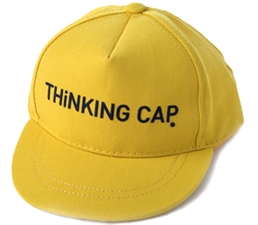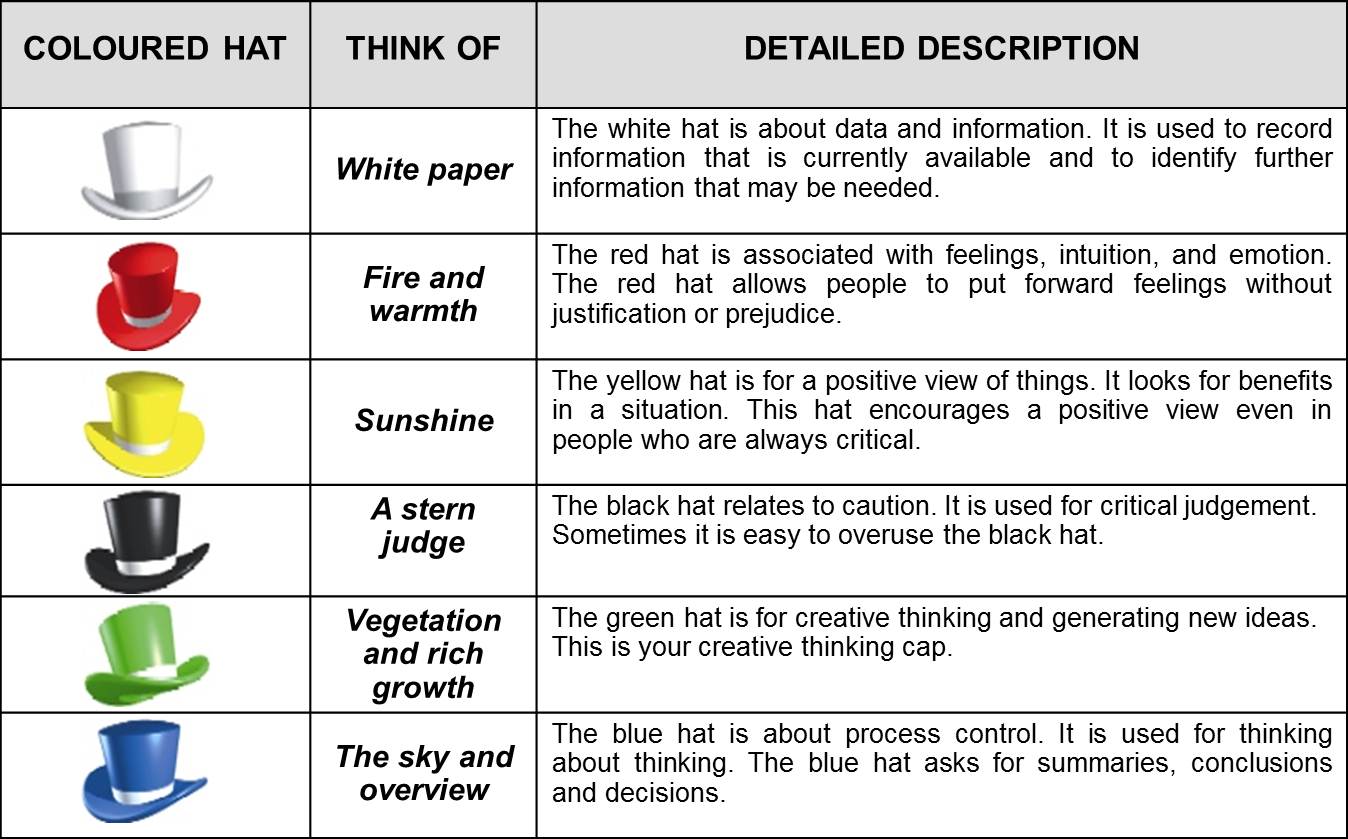Let’s Taste - The Retrospective
Posted By Duncs ~ 5th June 2013
Here we go then with the dissection of my “Lets Taste” session at Let’s Test 2013. After reading the great post from Aleksis where he applies 6 Hats Thinking to attending Let’s Test, I’m going to try & use the same technique for retrospecting on my session.
This retrospective also includes valuable feedback I received from Paul Holland, Fiona Charles, Iain McCowatt, Carsten Feilberg & John Stevenson- thank you all.
Whilst reading around the subject of 6 hats thinking, I found this & thought I’d use it with the Wikipedia entry to frame my post:
White Hat - Information
- 40 minutes talking
- 20 minutes open season
- Session split into 2: presentation & experiential
- no tables
- Chairs in circle around me
- Borrowed clicker off Huib
- Had to change batteries in clicker before session
Red Hat - Emotions
- Nervous
- Excited
- Anxious
- Proud
- Happy
Yellow Hat - Optimistic Response
- Man - I’m presenting at my first conference & that conference is Let’s Test!
- Happy to have been given this opportunity
- Look how many people showed up!!
- Nervous about presentation content - although focus had changed to more of an experience report
- Nervous about experiential session - is it too contrived?
- Started confident - this was going to be a piece of cake!
- Full house of attendees - the biggest crowd I’d spoken in front of
- Good banter at beginning - were they really only there for the chocolates?
- Good response to the challenge in the experiential session
- Some great probing questions carried the experiential session without me having to do too much
- The “buggy” gummy bears worked a treat!
- I got some really great questions about how I test sooner - working out how they could apply it in their context
- Some supporting comments from an attendee stating he uses a simialr technique in larger scale organisation - that was really great to hear. I changed the session to be more of an experience report as a kind of safety measure because I was unsure if this technique could be applied in different contexts
- Some of the attendees got some of the points I was trying to get across - One in particular had a look in the “factory” & found the ingredients for making sweets!
Black Hat - Discernment
- I lost confidence throughout the presentation - caused me to waffle
- I spoke longer than I intended - this cut into the experiential part of the session
- I spent too long looking for confirmation in the attendees from the first couple of slides - I didn’t need to, the content was that deep to warrant me checking I hadn’t lost the audience
- The leap from the presentation to the simulation was too much - it was tricky for the attendees to get where I was coming from
- I thought I’d primed the attendees with the meatballs & that I prefer testing close to the source code, but that priming was undone with the challenge handout
- The simulation was to contrived - too much going on , trying to demonstrate too much.
- I had to push the attendees in the direction I wanted to go - my socratic questioning failed me
- The simulation ended up being less about learning & more about teaching the idea - that’s not what I wanted
- From feedback received, it was clear that the session had evolved when I was preparing it & this had a negative impact on the session
Green Hat - Creativity
- Presentation adds “noise” which doesn’t add much more value than the simualtion alone
- I need a simulation which gets the point across
- Simulation needs to have less points to get across
- What is the point?
- Testing sooner provides advantages such as fast feedback, better communication, rapport between team members
- The whole development team is responsible for quality
- Need to try & bake quality in from the beginning of development of a feature
- Is the presentation actually needed?
- Other simulations I’ve attended don’t have presentations, they’ve included stories of experience drip fed throughout the simulation
- I don’t really like presentations as I find myself being hindered by them - maybe i’m putting too much info into them?
- Need to have more courage with the session - from feedback, I know the testing approach is good & it can be scaled. As I was preparing the session, I didn’t know if this was the case or not, so shied away from saying it was scalable
- Need to read up on systems thinking more - this approach to testing can be applied to big systems which have been broken down into their sub-systems, which is exactly in the case in my current employment!
- Would the session be better in Lego?
- Can I adapt the Scrum / Kanban Lego simulations?
Blue Hat - Thinking About Thinking
- My practice sessions were only to my work colleagues - this probably meant that I received different feedback than if I had presented the session to strangers as well.
- It was great to get my first conference session under my belt
- That session was the first time I had carried out a session with that many people - looking after & talking to that many people are definitely skills I need to practice
- OK - it didn’t go as I’d hoped, but I got some good questions & feedback from the attendees
- I’ve learned some valuable lessons & I’m grateful for having the opportunity to learn
- So I need to rebuild the session from the ground up
- Drop the presentation - does not tie with simulation & adds little value as it stands
- The points I’m trying to make in the presentation can be made throughout the simulation
- Drop the chocolates - they were a gimmick which didn’t pay off as I’d hoped
- What can I use instead of chocolates? I’m thinking there’s got to be something with dice or Lego
- Get the attendees more involved from the start - assume roles within the simulation
- I need to practice running other peoples simulations
- They are far wiser than me & their simulations are tried & trusted
- I can focus on learning how to run a simulation without the stress of creating one - creating simulations can come later
- Learning how to run a simulation first will help me to adapt in simulations & “go with the flow” if needs be
- Sources of simulations I have access to include:
- Experiential Learning Jerry Weinberg
- Problem Solving Leadership Weinberg, Rothman & Derby
- Collaboration Games Karen Greaves and Samantha Laing
- Gamestorming Dave Gray, Sunni Brown, James Macanufo
- Lego Simulations Various
- Lean Simulations Org Various
- I still prefer an experiential session over a straight up lecture - I just need to get better running the simulations before trying to create my own!
All in all, a great experience & I’m thankful for everyone who chose to attend my session - I hope you got something out of it other than just a sugar high!
Whats next? Rebuild the testing sooner simulation, run other peoples simulations with smaller groups of people, preferably strangers…
Sources
http://flowoftesting.wordpress.com/2013/05/10/338/
http://www.youtube.com/watch?v=DasTbFUcmtI (thanks Aleksis)





